Tiananmen Square

|
Tiananmen
Square
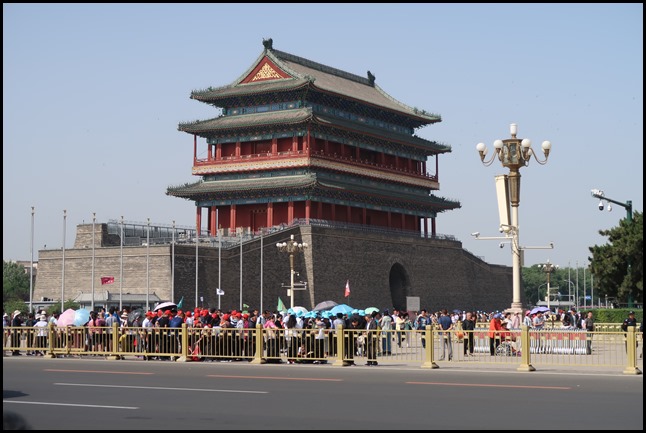 We braced ourselves with a hearty
breakfast to take on Tiananmen Square. We left our digs at nine and by half past
stopped to admire the Zhengyangmen Gate. Popularly
known as Qianmen, was formerly named Lizheng Gate meaning beautiful
portal. It stands at the southern end of the Tiananmen Square, a part of
the ancient city of Beijing. First built in 17th Year of Emperor Yongle of Ming
Dynasty in 1419, it was one of the nine city gates in the old city of Beijing
opening directly into the Imperial City. It is a complete system of ancient
defensive architecture that integrates Zhengyangmen gate tower, arrow tower and
barbican city. Now only the city tower and the embrasure watchtower are in
existence. It is the only well-preserved city gate in
Beijing.
The city tower stands on a brick platform that occupies an area of 3,047 square meters with 1.2-meter-high eave walls respectively on the north and south. Doors can be found in four directions upstairs and downstairs. The tower is 36.7-meter wide, 16.5-meter deep and 27.3-meter high. The whole building is 42 meters in height, which makes the gate the highest among all the gates in Beijing. The gate complex was extensively reconstructed in 1914. The barbican side gates were torn down in 1915. 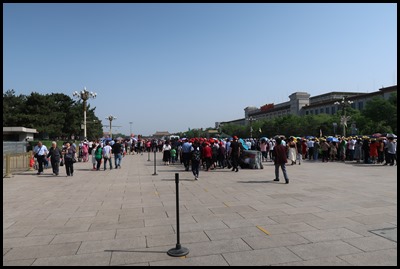 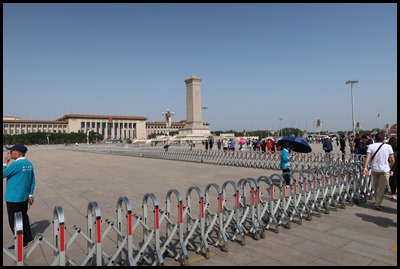 Massive was
our first thought. We have never seen so many crowd control
wheelie thingies.
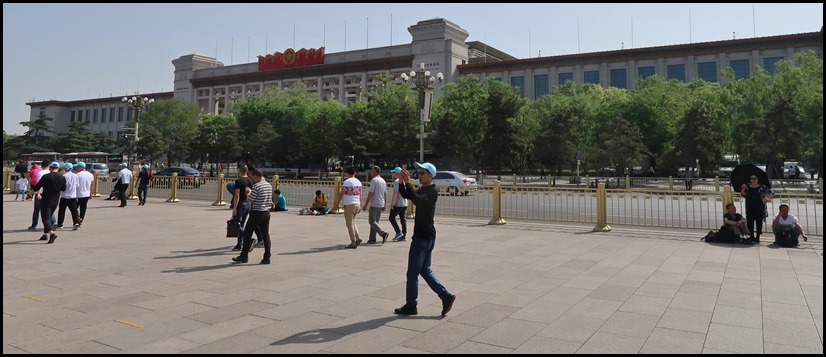 Over on our right on the other side
of the road is the colossal National Museum of China. The building itself sits on
sixteen acres, one of the biggest in the world. Over eight million people visit
each year to view some of the 1,300,000 items – only the Louvre in Paris
attracts more visitors.
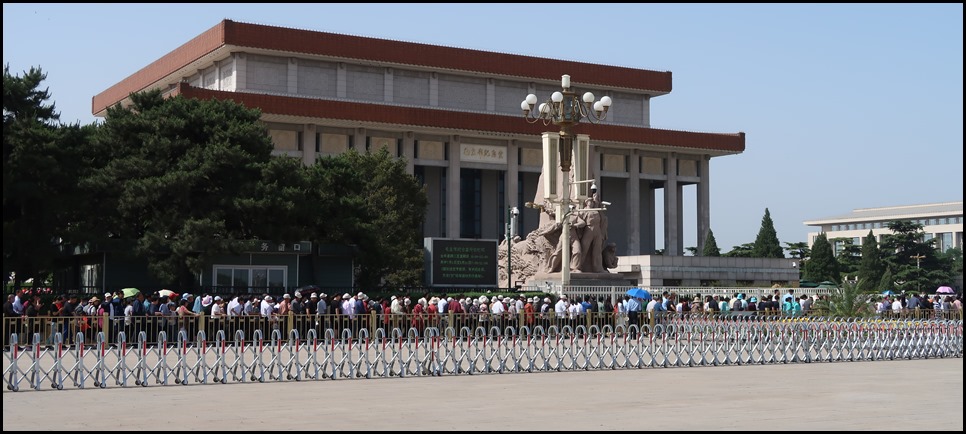 The queue to see Chairman Mao in his
$500,000 crystal casket (non-believers think he is under a waxwork sculpture –
there are loads of pictures on the internet). The Chairman Mao Memorial Hall, also
known as the Mausoleum of Mao Zedong, is the final resting place of the Chairman
of the Politburo of the Communist Party of China from 1943 and the Chairman of
the Communist Party of China from 1945 until his death in
1976.
Although Mao had wished to be cremated, (as did Ho Chi Minh in Vietnam) his body was embalmed and construction of the Memorial Hall began shortly thereafter and finished the following year. It stands on the previous site of the Gate of China, the southern main gate of the Imperial City during the Ming and Qing dynasties. 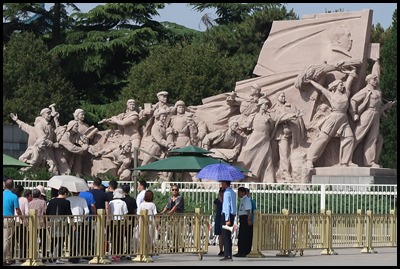 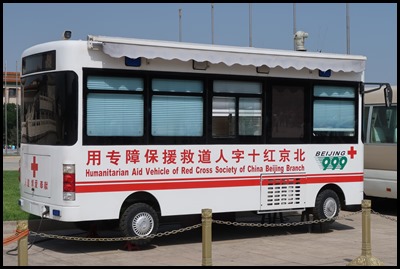 One of the statues
outside Chairman Mao’s Memorial Hall and a thoughtfully placed Red Cross bus.
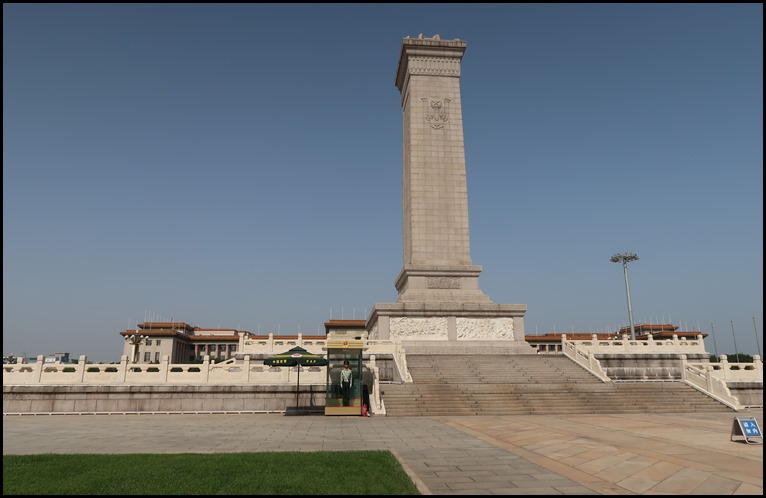 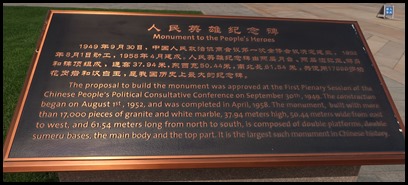 Monument to the People’s Heroes. The plaque reads: The proposal to build the monument was
approved at the First Plenary Session of the Chinese People’s Political
Consultative Conference on September 30th, 1949. The construction began on
August 1st, 1952, and was completed in April, 1958. The monument, built with
more than 17,000 pieces of granite and white marble, 37.94 meters high, 50.44
meters wide from east to west, and 61.54 meters long from north to south, is
composed of double platforms, double sumeru bases, the main body and the top
part. It is the largest such monument in Chinese
history.
  A noble monument to the Unknown Soldiers. The
guards change every three hours and keep watch twenty
four hours a day, every day of the year. Most of the ones we saw looked about
twelve years old.
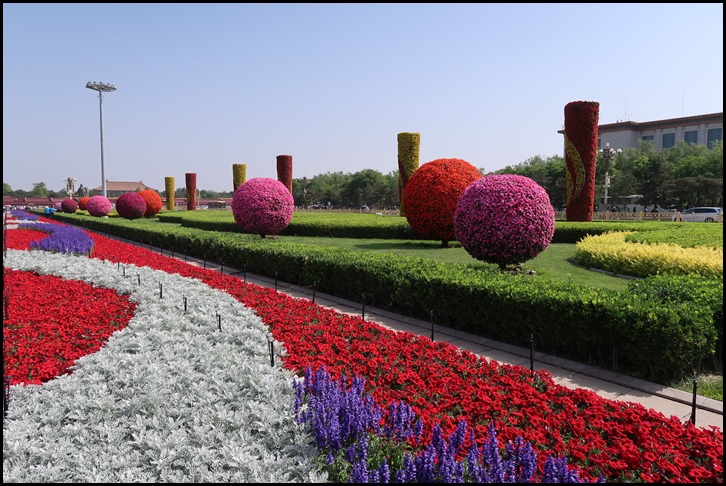 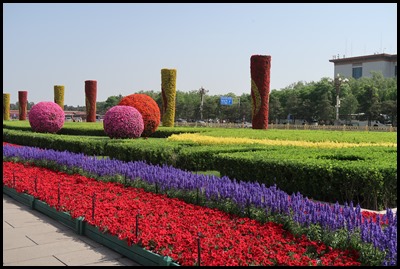 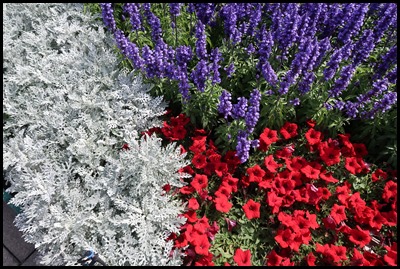 In the far right
corner of the square was a surprise splash of colour. Exquisitely kept plants and well-watered flowers in happy colours.
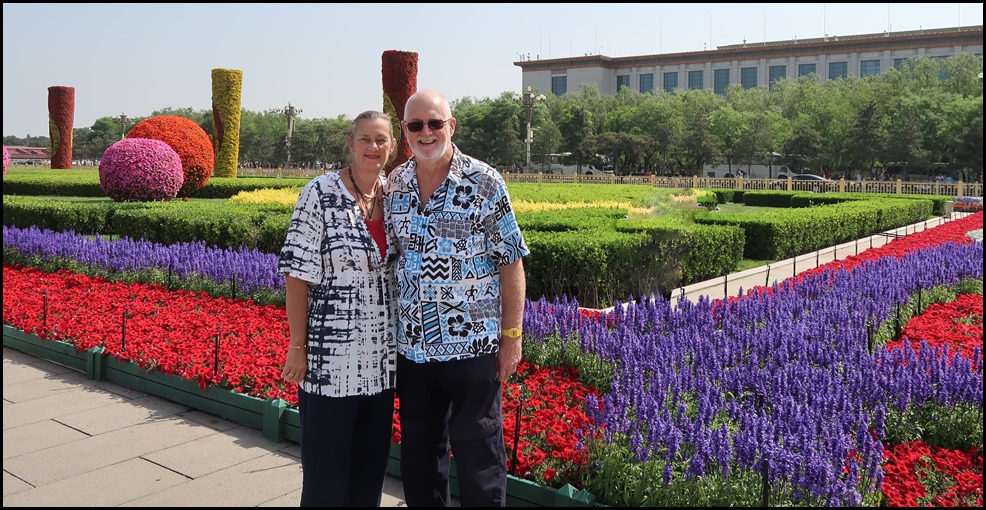 We posed,
didn’t think the whole shirt clashing thing did we...............
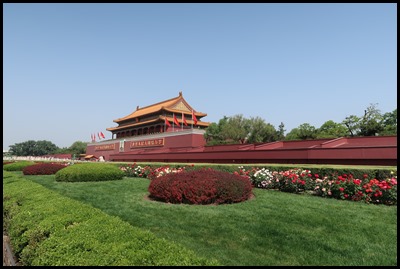 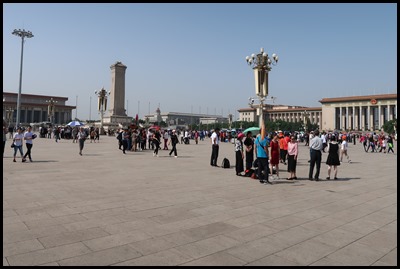 From this corner the Gate of Heavenly Peace looked really pretty. One final look back at the square before we headed to the
underpass to head toward the Forbidden City.
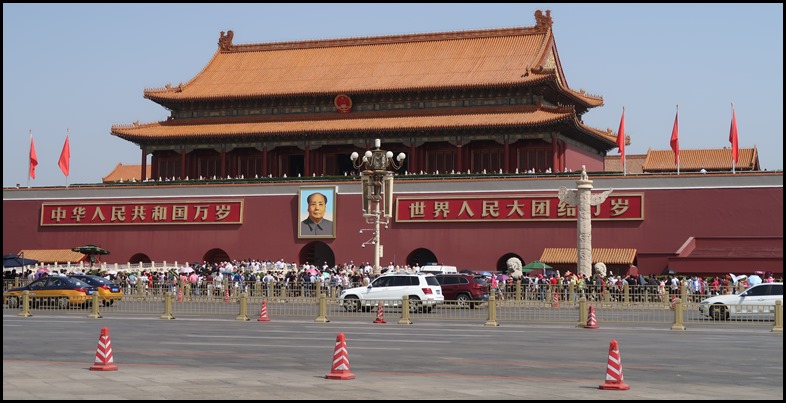 The Tiananmen or the Gate of Heavenly Peace, is the famous gate in the centre of Beijing, widely used as a national symbol of China. First built during the Ming dynasty in 1420, Tiananmen was the entrance to the Imperial City, within which the Forbidden City was and is located. The gate lies to the north of Tiananmen Square, separated from the plaza by Chang’an Avenue. This famous road was extended to ten lanes in 2009 as part of the 60th anniversary celebrations of the People’s Party, the widest road in the city and is seen on the television during the marches and military parades and runs for forty kilometres, no lorries are allowed to use the road near the gate and no advertising is allowed. During parades and celebrations the VIP’s sit just above Chairman Mao’s painting (weighing in at one and a half tonnes) is redone every three years or when vandalised. A chap threw an egg at it in 1989 and only got out of prison seventeen years later...... Time to explore the Forbidden City. ALL IN ALL MASSIVE, UTILITY,
SOULLESS AND SO MANY PEOPLE
HUGE AND VERY
CROWDED |